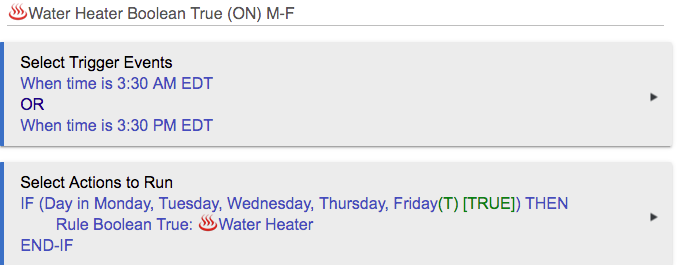It's no secret that the RM UI leaves something to be desired, but to be fair to the Hubitat devs, they are working with a UI framework that they more or less didn't design (it's a near clone of the SmartThings SmartApp UI model, which was designed to show UIs on mobile devices since that is the only way to do this on that platform). RM 4 is quite a bit more powerful than earlier versions of RM, though some things may require a few more clicks than they did before. The tradeoff is great power. Staff have mentioned that they are not totally opposed to a UI framework revamp, but this is unlikely to be a priority for them at the moment, and even then, RM would likely not be one of the first beneficiaries (though it does probably push the limits of this UI framework the most).
I suspect that some of the comments on RM result from simply not being used to it. I don't doubt that Reactor on Vera is great, but honestly, from watching the video and looking at the screenshots for a few minutes, I seem about as confused as some people say they are with RM inititally.  (I can say that I tried Vera back when PLEG was the closest alternative suggested for this purpose, and I left, though by no means for just for that reason.) There are lots of docs and examples (examples, examples, examples forum tag) for RM, and looking at some of those is likely to be helpful. Giving it time to get used to many also help.
(I can say that I tried Vera back when PLEG was the closest alternative suggested for this purpose, and I left, though by no means for just for that reason.) There are lots of docs and examples (examples, examples, examples forum tag) for RM, and looking at some of those is likely to be helpful. Giving it time to get used to many also help.
PS - I'm not sure all of what that thermostat "rule" does, but Thermostat Manager built-in to Hubitat may help. Unlike a lot of other platforms I've played with, Hubitat has a lot of pre-built "apps"/automation templates to handle common tasks, reducing the need to write custom logic for everything in the first place.
PPS:
There are actually delays and waits, which behave in slightly different manners, but depending on what you want, either can be used to create this effect. The suggestions above are one way but may require two rules (which there is nothing wrong with). Within a single rule, something like this will do something if the door stays open for 15 minutes, for example:
Trigger: Door changed
Actions:
IF (Door open) THEN
Delay 0:15:00 (cancelable)
// Do things
ELSE
Cancel Delayed Actions
END-IF
Alternatively:
Trigger: Door open
Actions:
Wait for event: Door closed --> timeout 0:15:00
IF (Door open) THEN
// Do things
END-IF
The biggest difference (besides the fact that "Wait"s are generally intended to respond to events or conditions and not just durations) is that delays must be explicitly cancelled, whereas in-progress Waits are cancelled any time a trigger matches (and in any case, when a trigger matches, the rule begins running from the top).
These are just a couple other ways you could approach the same problem.
PPPS - All of your IF THENs appear to be missing END-IFs.  Harmless if it's the last thing but would start to matter if you nest or have additional actions afterwards.
Harmless if it's the last thing but would start to matter if you nest or have additional actions afterwards.






